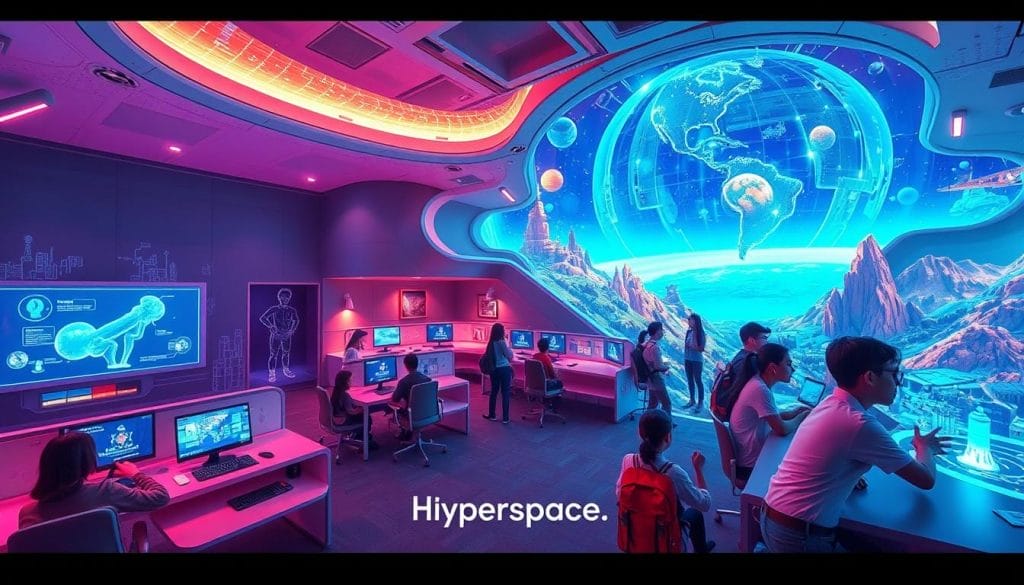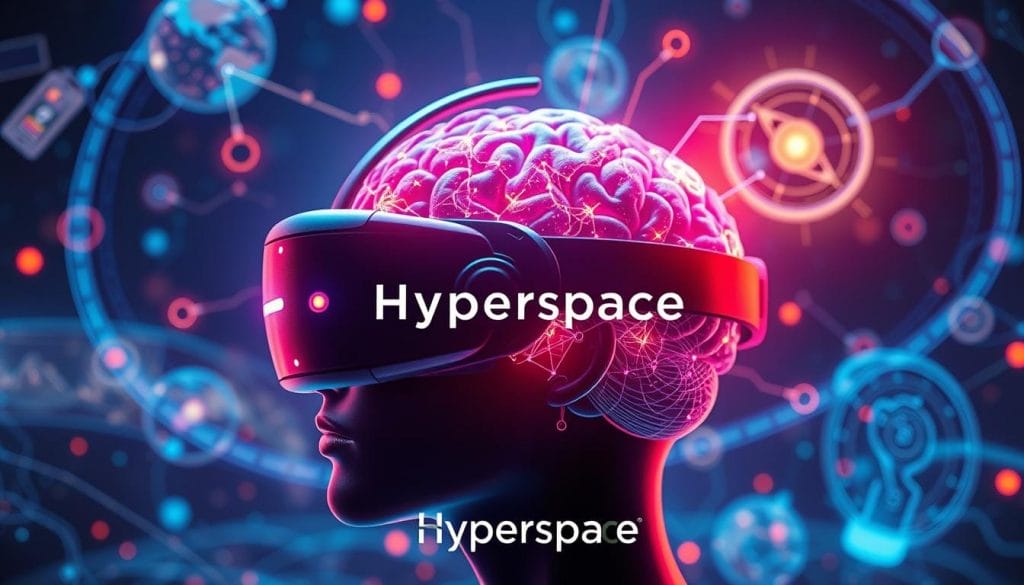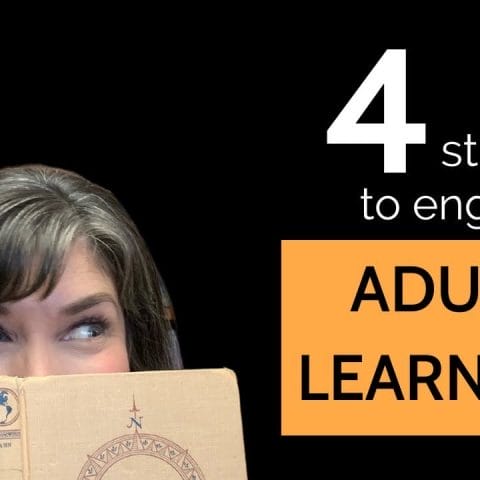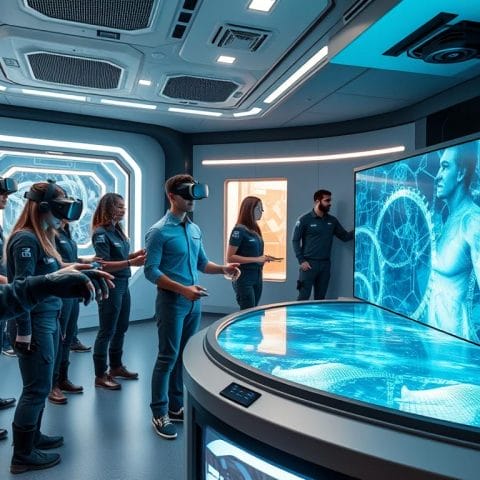Virtual reality (VR) has changed the game in education and training. Many studies support its benefits. It makes learning more active and engaging than old methods.
VR is used in many areas, like medical students practicing surgeries and engineering students exploring complex machines. It also helps history students visit ancient sites. This approach makes learning fun and accessible for everyone, boosting motivation and results.
Key Takeaways
- Virtual reality and augmented reality technologies can be leveraged as highly effective and efficient tools for learning.
- Immersive learning solutions, including virtual reality, augmented reality, and mixed reality, cater to diverse domains such as skilled trades training, science experiences, museum journeys, retail, and military applications.
- AI-enabled learning solutions offer precise, data-driven feedback to enhance the effectiveness of training and education.
- Blending entertainment with education, known as edutainment, can improve engagement and retention in immersive learning experiences.
- Studies show that VR learners are significantly more engaged, retain information better, and are more confident in applying their skills compared to traditional classroom learning.
What is Immersive Learning with Virtual Reality?

Immersive learning uses virtual reality (VR) to make learning fun and interactive. It lets learners practice real-world tasks in a safe space. This method combines new tech with teaching methods to improve learning.
Definitions and Key Concepts
Immersive learning with VR focuses on a few key ideas. Interactivity lets learners make choices and see the results. Engagement keeps learners interested and focused. Realistic simulations make learning feel like the real thing, with all its challenges.
Interactivity and Engagement
VR makes learning interactive and engaging. Learners can explore and interact with the virtual world. This approach keeps learners focused and interested, which is important for success.
Gallup estimates that low engagement in the global workforce costs the economy $8.8 trillion. Immersive learning can help businesses reach their full potential.
Realistic Simulations and Experiential Learning
VR is great at creating realistic simulations of real-world situations. Learners can practice in a safe, controlled space. This is especially useful in fields like healthcare and emergency response.
The Science Behind Immersive Learning with VR

Studies show that virtual reality (VR) is great for learning. It works by touching many parts of the brain at once. This includes areas for seeing, understanding space, and feeling emotions. This multi-sensory approach strengthens brain connections, making it easier to remember and recall information.
Neurological Engagement
VR engages the brain deeply. It uses all senses to focus the mind. This focus helps in learning and remembering better.
Presence and Embodiment
VR makes you feel like you’re really there. This feeling boosts your emotional connection to the learning experience. It makes you more motivated and engaged.
Experiential Memory Formation
VR learning is like real-life experiences. It leads to better learning and more emotional connection. Learners can dive into simulations, making their memories stronger.
VR’s science shows its power in learning. It uses senses, presence, and feeling to improve retention and transfer. This makes VR a key tool for education and training.
| Metric | Previous Cohort | Current Cohort |
|---|---|---|
| Students Reporting Discomfort After VR Use | 63.63% | 28.29% |
| Students Reporting Positive VR Experience | 40% | 70% |
“VR-based learning allows for the creation of realistic simulations, enabling learners to actively participate in the learning process and form stronger memories of the experience.”
Benefits of Scaling Immersive Learning with Virtual Reality
Virtual reality (VR) in immersive learning brings many benefits. It’s a great choice for companies wanting to improve their training. One key advantage is creating a safe space for trying out risky situations without harm.
Safety and Risk Management
VR is excellent for safety training. It lets people practice for emergencies like fires or spills safely. This way, they learn how to follow safety rules better, lowering the chance of accidents.
A big bank saw a 10% jump in customer happiness in just 6 months after using VR for call center training. Verizon also found that 97% of their retail staff felt more ready to handle armed robberies after VR training.
Engagement and Retention
VR makes learning more engaging. It helps people focus and learn better, especially in stressful situations. For example, a shipping company saw a big jump in how well workers remembered their training.
VR training also boosts learning retention. 48% of those who used VR could recall all six core values perfectly. This is much better than traditional methods, showing a huge improvement in learning.
“VR training increased learning retention, with 48% of VR learners recalling all six core values perfectly compared to only 3% of traditional training methods, showing a 16X greater learning retention rate.”
VR helps companies grow their learning programs. It boosts employee engagement and keeps knowledge fresh. As VR technology gets better and more common, its benefits will keep growing.
Accessibility and Scalability of VR Learning Platforms
Virtual reality (VR) makes learning fun and accessible for everyone. It uses VR and 360-degree videos to create interactive learning spaces. This makes learning more enjoyable and effective, helping people learn and practice new skills easily.
VR learning platforms are great because they can grow with your needs. 360-degree videos are a big step up in training, letting companies teach employees all over the world. They start with one scenario and then add more, reaching different departments and areas.
| VR Training Statistics | Impact |
|---|---|
| VR technology creates a 360-degree view of a simulated world, enhancing training scenarios like flight simulators or surgical training. | Improves the realism and immersion of training experiences. |
| Immersive learning increases engagement levels significantly compared to traditional learning methods. | Leads to better information retention and learning outcomes. |
| VR fosters a sense of physical presence and embodiment within a virtual space, leading to improved motivation and engagement. | Enhances the emotional connection and commitment to the learning process. |
| VR reduces extraneous cognitive load by providing realistic contexts and visual cues, leading to a more focused learning experience. | Enables learners to concentrate on the essential information and skills. |
| VR creates a safe environment for learners to experiment and make mistakes without real-world consequences. | Promotes risk-taking, exploration, and a positive learning mindset. |
VR learning platforms are a strong tool for companies wanting to train their teams well. They offer a way to make learning both accessible and scalable. This helps improve employee skills and success.
Data-Driven Insights for Immersive Learning
Organizations are using virtual reality (VR) for immersive learning. This brings a lot of data that helps improve training. VR learning platforms give real-time reports on how learners do, how engaged they are, and how well they remember what they learned. This helps make training better and more effective.
Immersive learning with VR offers a new way to see how training works. For example, 44% of learners do better on soft skills tests after VR training. Also, 95% of learners feel more confident on the job after XR training. A study found that technology-based learning helps a lot in middle and low-income countries.
VR also gives insights into what learners experience. VR training is cost-effective with 375 learners, matching classroom learning. A PwC study (2020) found that V-learners were 275% more confident after training. Classroom and e-learners saw improvements of 40% and 35%, respectively.
Using data, organizations can make their immersive learning better. They can tailor training to what their workers need. This approach makes immersive learning more valuable. It helps organizations make smart choices about training, leading to better performance and results.
“Data-driven insights through learner behavior analysis can help fine-tune L&D strategies, uncovering trends, identifying areas of struggle, moments of disengagement, and resonating content.”
Scaling Immersive Learning with Virtual Reality
The global market for VR in education is set to hit $700 million by 2025. Companies are quickly adopting virtual reality (VR) learning platforms to grow their immersive learning efforts. These platforms aim for universal access, supporting many languages and devices like mobiles, web, and VR headsets.
They work well with current learning systems, making it easy to start using them. This helps in quickly improving skills. They also meet big business needs, like ISO 9001 and ISO 27001 certification and strong data privacy policies. This makes them reliable partners.
Accessible and Inclusive Content
VR learning platforms are great because they’re inclusive. They have features like closed captions, text-to-speech, and adjustable font sizes. This lets everyone join in, making learning more accessible and encouraging everyone to participate.
Enterprise Security
Security is a big deal for companies, and VR learning platforms take it seriously. They use top-notch security, like Mistral AI at edtake and Microsoft Azure cloud at Uptale. This gives businesses the confidence they need.
Rapid Deployment
VR learning platforms integrate smoothly with existing systems. This makes it easy to start using them, which is key in today’s fast world. Being able to quickly train employees is crucial for success.
As more companies want to scale immersive learning, VR platforms are becoming a key tool. They help businesses improve their training and workforce development with virtual reality.
Choosing the Right Immersive Learning Technology
Before choosing new immersive learning tech, it’s key to understand your learning needs and what you can do. A detailed needs analysis helps find where immersive learning can make a big difference.
Needs Analysis
First, look at your current learning methods to see where immersive tech can help. Think about what you want to learn, who you’re teaching, and what skills you need. This will help you decide how much immersion and interactivity you need.
Organizational Tech Capability
Then, check if your tech setup and learning team are ready for immersive learning. See if you have the right tools and know-how to use it. If not, think about working with other teams or outside experts to fill the gaps.
Budget and Cost Considerations
Lastly, think about the money side of immersive learning tech. Look at your budget and weigh the upfront costs against the long-term benefits. Also, remember the ongoing costs for upkeep and support to keep your learning programs going.
| Metric | Immersive Learning Impact |
|---|---|
| Training Time | Virtual learners complete training 4x faster than traditional methods |
| Learner Engagement | Virtual learners are 4x more focused than e-learners |
| Skill Development | 70% of consumers believe AR can aid in skill development |
| Confidence to Act | V-learners reported feeling up to 275% more confident to act on what they learned |
| Emotional Connection | Learners can be nearly 4 times more emotionally connected to content in a virtual setting |
By thinking about your learning needs, what you can do, and your budget, you can pick the best immersive learning tech for your team.
Implementing and Evaluating Immersive Learning Programs
Organizations looking into virtual reality (VR) for learning should plan carefully. Start with a small pilot group to test the program. This way, you can get feedback and see if it fits your needs.
Piloting and Iteration
Testing a learning program with VR first is key. It lets you collect feedback and set clear goals. This step is crucial for making a strong case for using VR in your learning strategy.
After the pilot, focus on improving the program. This means making it better and addressing any challenges. It helps decide if VR is right for your learning goals.
Scalability and Customization
Scaling up VR learning requires checking if the technology can handle more users. Look at how well it works during busy times and what support it needs. Also, think about creating your own VR experiences. You’ll need the right tools and support for this.
Accessibility and Inclusivity
It’s vital to make VR learning accessible to everyone. Check if the platform works with assistive tech and is easy for all learners. Make sure the content is inclusive too. This way, everyone can learn and grow together.
| Retention Rates | Percentage |
|---|---|
| What is read | 10% |
| What is heard | 20% |
| What is seen | 30% |
| What is discussed with others | 70% |
| What is personally experienced | 80% |
These numbers show how powerful VR learning can be. It lets learners engage deeply with content. By carefully planning and testing VR learning, organizations can create amazing experiences. This prepares their teams for the future.
Conclusion
Immersive learning through virtual reality (VR) is changing how we train and learn. It makes learning active, safe, and fun for everyone. VR is making education better by offering new ways to learn.
Studies show VR helps improve skills and decision-making, especially in medicine. It also makes real-world skills better. More research is needed to see how well VR skills work in different situations.
Choosing VR for learning should be a careful decision. It depends on what an organization needs and can do. By picking the right VR tools, organizations can make learning better and more effective.





